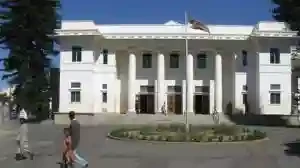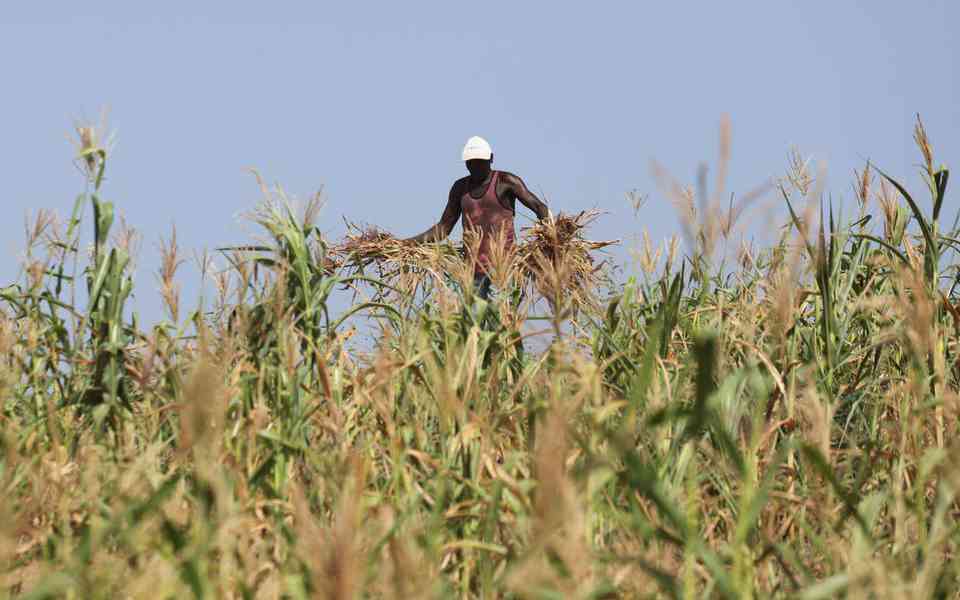
Rwanda commemorates 30 years of liberation today, a somber milestone marking the end of the 1994 genocide against the Tutsi. Over a million innocent lives were tragically lost in that horrific ethnic massacre.
The 30th Liberation Anniversary celebrates the triumph over a genocidal regime, a stark contrast to the darkness it cast. It honors the bravery of young men and women who, at a great personal cost, abandoned their families and rose to liberate their nation.
In the years leading up to 1994, the specter of torture haunted the nation. Millions, unable to bear the burden any longer, fled, becoming refugees adrift in a sea of uncertainty, their dreams of returning home fading with each passing year.
When a few Rwandans ran out of options because peaceful political change in their native country was impossible, they formed the Rwandese Alliance for National Unity (RANU), which morphed into the Rwanda Patriotic Front (RPF-Inkotanyi) and eventually into its military wing the Rwanda Patriotic Army (RPA).
The RPA then took up arms with an intention of putting an end to the genocidal regime after years of struggle. Thirty years on, Rwandans can count on the many achievements that the country has realised, thanks to the brave men and women who sacrificed their all.
“It has been a very progressive journey, a journey in which we began from scratch. We had to build political, economic and social institutions from scratch,” Rwanda Defence Force (RDF) Spokesperson, Brig Gen Ronald Rwivanga, told The New Times, adding that there are visible achievements 30 years down the road.
Those achievements can be seen through different facets of the country’s life, but key among others, was to overcome divisive politics, setting a foundation to build and transform the country without basis on ethnicity.
Rwivanga particularly said a key political achievement was the deliberate decision and the ability to integrate political parties into the political discourse of the country.
- MUCKRAKER: The grapes are sour anyway
- Govt curbs human trafficking
- Rwanda MPs oppose contraceptives for 15 year olds
- Don’t meddle in Rwanda politics, Zim teachers warned
Keep Reading
“We had several discussions that were held on the political front regarding the integration of different parties, following the Arusha Peace Agreement, and that has been continuously refined to integrate as many people in the political activities of the country,” he noted.
Reconciliation, return of refugees
At the end of the genocide, the government was puzzled with how to deal with a society that was gripped by trauma. In addressing this, it instituted and implemented policies that nurtured justice, unity and reconciliation.
According to Boniface Rucagu, the former chairperson of the National Itorero Commission, liberation to him means getting liberated from the bad politics of divisionism, which destroyed the Rwandan unity.
“It also means shunning genocide ideology and any other negative ideologies and instead embracing a good part of fighting genocide ideology, and building a culture of peace and security, and sustainable development,” he noted.
In the aftermath of the 1994 genocide against the Tutsi, over 20,000 officers and personnel of the former army were integrated in national armed forces and over 3.5 million refugees were repatriated, resettled and reintegrated successfully, according to the 2016 National Unity and Reconciliation Commission report on unity and reconciliation process.
Rwanda prioritised restorative and reconciliatory justice. Genocide related cases that would take a century in courts, were investigated and tried in a single decade. Homegrown traditional Gacaca courts were reinstated and tried almost two million cases in only ten years, according to the 2012 National Service for Gacaca Courts.
That approach has not only helped to deliver justice, it has also ensured that the country focused its paltry resources at the time on other nation-building priorities such as strengthening peace and security as a foundation for other sectors of the economy.
The RPA forces not only stopped the genocide, they made sure that the genocidal forces that thought about regrouping and wage another war from the Democratic Republic of Congo where they had fled, will never get that chance.
Today, the Rwanda Defense Force (RDF) has grown to become one of the leading contributors to peace-keeping missions in the world, including in South Sudan, Central African Republic, and Mozambique.
RDF became the first force to deploy in Darfur, South Sudan.
“This was driven by our desire to set a very good example in responding towards acts of genocide. We can say with certainty that our contribution played a very significant part in creating stability in Darfur,” Rwivanga said.
The RDF’s responsibility has grown beyond a battle of the gun to proactively being involved in social development initiatives such as building integrated model villages, constructing bridges and roads, as well as building schools and healthcare facilities.
For Rita Sandrine Umuhoza, a 24-year-old university graduate, Rwanda’s story is a reminder to the young people of the weight of the responsibility they carry in nation-building.
“Liberation means resilience, courage, and the hard work of young people who refused to remain as refugees and never agreed to watch the genocide happening,” she observed.
Umuhoza, who currently works for a marketing agency, highlighted selflessness as an important lesson that young Rwandans should carry as the country embarks on the next chapter of its transformation journey.
“Some if not most of the liberators left behind their families without telling them because they were scared that their families would turn down the idea. They were determined for the cause regardless of whatever it required,” she said.
Rwanda on the horizon
Beyond restoration of peace, security and reconciliation, major achievements that were pro-poor have enabled the country to rise from a totally destructed country to becoming competitive in the region.
Pro-poor initiatives such as Mutuelle de Sante has enabled Rwanda to achieve universal health coverage with statistics showing that Rwandans with healthcare insurance has rose from 2.6 per cent in 1994 to 97.3 per cent currently.
More than 91 per cent of the population is currently covered by ‘Mutuelle de Sante’ – a robust universal healthcare system that the current government championed.
That story, however, cannot be complete without the mention of Community Health Workers (CHW), a programme that was introduced in 1995 to address the shortage of medical resources such as a limited number of nurses and doctors.
Since then, Community Health Workers, globally recognised as a key driver of Rwanda’s early achievement of Millennium Development Goals, have complemented the existing healthcare programmes by being champions of offering basic medical attention at village levels such as diagnosis and treatment of childhood illnesses, malaria for people of all ages, malnutrition screening and referral, provision of contraceptives, and tuberculosis.
These volunteers, currently close to 60,000 across the country, have played a major role in Rwanda’s fight against malaria, with the proportion of malaria cases treated at community level rising from 7 per cent in 2014/15 to 59 per cent in the fiscal years 2022/2023, according to the Rwanda Biomedical Centre (RBC).
The system of these volunteers has, in particular, contributed a lot to the reduction of maternal and child mortality. The maternal mortality ratio has dropped from over 1,000 in 2,000 to 203 deaths per 100,000 live births in 2020, currently standing at 100 deaths per 100,000 live births.
Girinka, a programme introduced in 2000 in which every poor Rwandan is given a cow as part of the government’s poverty eradication plan, has boosted the wellbeing of vulnerable families.
Vision Umurenge Program (VUP), a scheme introduced to provide assets to vulnerable people, including small and agricultural inputs, has facilitated the creation of income-generating activities thereby helping to eradicate poverty.
The economy
There is perhaps no better way through which Rwanda can mark its liberation anniversary other than looking at the trajectory of its economic development over the years.
In 2000, an economic development blueprint, Vision 2020 was unveiled. Vision 2020 aimed at transforming Rwanda into a middle-income, private sector-led, knowledge-based and diversified economy by the year 2020.
This transformation required Rwanda to upturn its gross domestic product (GDP) per capita, a key indicator of the standard of living which measures how much a person earns on average, from $220 in 2000 to $1,000 currently, according to the World Bank.
The country’s economy grew from a contraction of 11.4 per cent in 1994 and averaged 7-8 per cent for 15 years consistent until 2019 before the Covid-19 pandemic hit the globe.
The economy grew by 8.2 per cent reaching Rwf16.3 trillion at the end of 2023.
Much of the growth seen in the last 30 years is attributed to the booming service, industry, and agriculture sectors. Services such as transport, tourism, ICT, and finance have contributed significantly to this positive growth.
RwandAir, the national carrier, now operates close to 30 destinations globally. This, together with open immigration policies, has enabled Rwanda to become a tourism hub, particularly for business tourism.
The positive trend has generally attracted investors to invest across key sectors of the economy, from vehicle assembly and pharmaceutical manufacturing, to mega agriculture ventures and technology, to mention but a few.
In 2023 alone, Rwanda registered a remarkable increase in new investment commitments, totaling $2.4 billion, representing a staggering 50 per cent increase compared to the previous year, according to Rwanda Development Board (RDB).
These investments are poised to generate over 40,000 jobs, highlighting the country’s growing attractiveness as an investment destination in the region.
Rwanda’s witnessed a surge in tourism revenues, surpassing $620 million, marking a substantial 36 per cent increase compared to 2022. The growth is a testament to Rwanda’s appeal as a premier tourism destination, with the leisure segment alone contributing $236 million to the total revenue.







